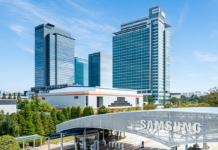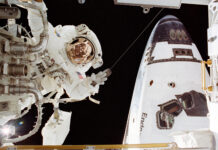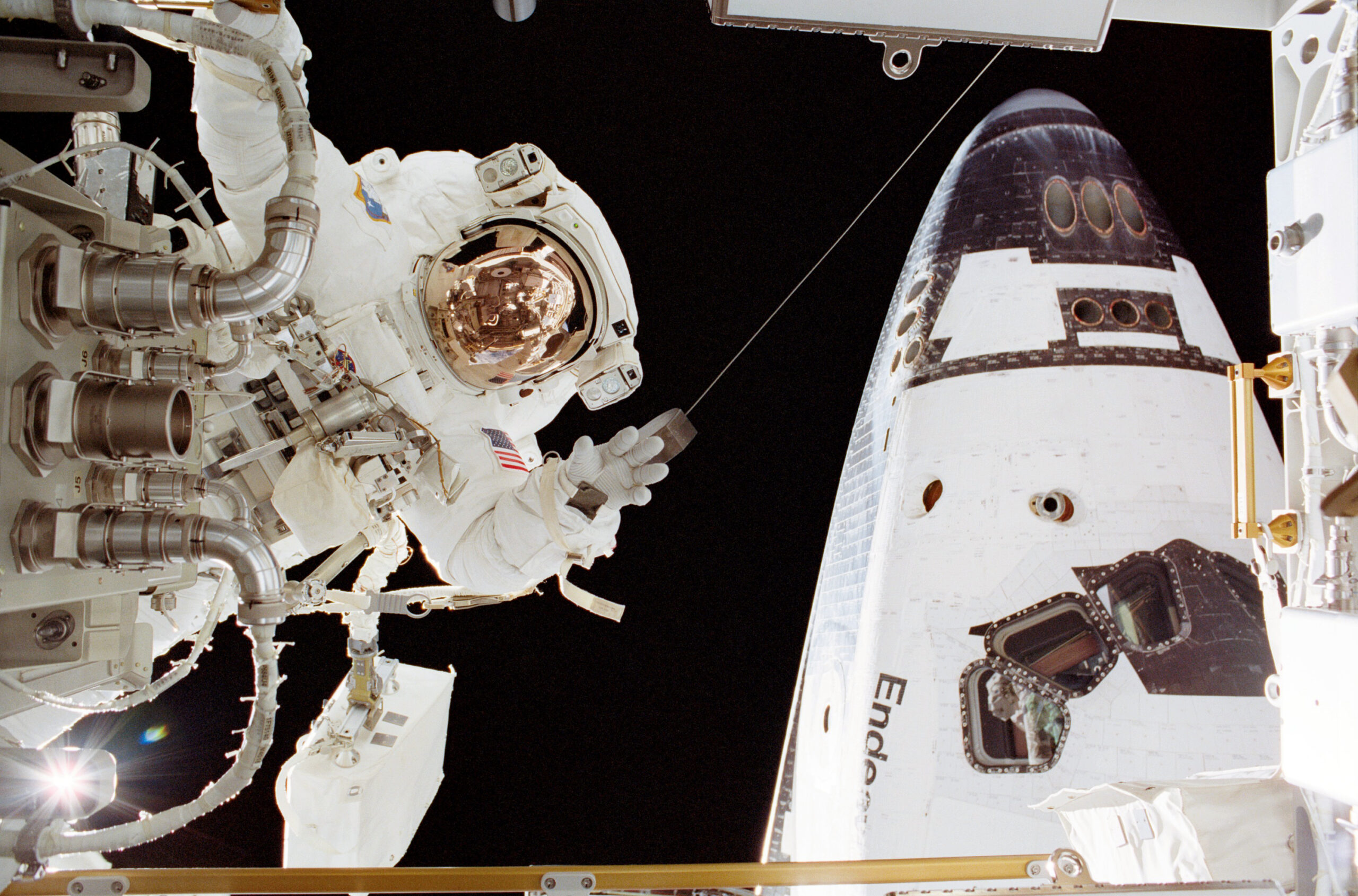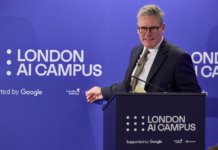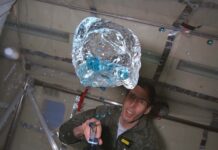The Historic Spacewalk of NASA Astronauts: A Milestone Achieved
On November 30, 2002, NASA astronauts John Herrington and Michael Lopez-Alegria successfully completed the third and final spacewalk of the STS-113 mission. This mission was a pivotal moment in the history of space exploration, as it involved the installation and activation of a crucial component on the International Space Station (ISS) known as the Port 1 Integrated Truss Assembly (P1).
The P1 truss was the first major structure to be installed on the left side of the ISS. It plays a significant role in the station’s operations by providing three additional External Thermal Control System radiators. These radiators are essential for managing the thermal conditions on the ISS, ensuring that equipment does not overheat and that the temperature remains stable for both astronauts and sensitive instruments.
John Herrington: A Pioneer in Space
Among the astronauts who took part in this historic spacewalk was John Herrington, who holds the distinction of being the first Native American to travel to space. Herrington is an enrolled member of the Chickasaw Nation, and his journey to space is a testament to his dedication and the progress of inclusivity in the field of space exploration. During the STS-113 mission, Herrington logged over 330 hours in space. His efforts included three spacewalks that totaled an impressive 19 hours and 55 minutes.
Spacewalks, technically referred to as Extravehicular Activities (EVAs), are critical for maintaining and upgrading the ISS. These walks involve astronauts leaving the safety of the space station to work in the vacuum of space, often performing complex tasks that are essential for the continued operation and expansion of the ISS.
The Significance of the P1 Truss Installation
The installation of the P1 truss marked a significant milestone in the ISS’s construction and functionality. The truss is a key component of the station’s backbone, supporting various systems and providing structural integrity. It allows for the expansion of the station’s solar arrays and facilitates the efficient distribution of power.
Moreover, the P1 truss contributes to the ISS’s thermal regulation system. In the harsh environment of space, temperature control is crucial. The thermal control system maintains the temperature within a range that is safe for both astronauts and equipment. The additional radiators provided by the P1 truss enhance the station’s ability to dissipate heat, ensuring that the ISS can accommodate more advanced research and technological experiments.
The Challenges and Triumphs of Spacewalking
Spacewalking is no small feat. It requires extensive training and preparation. Astronauts must be physically fit, mentally prepared, and skilled in using the equipment necessary for EVAs. The suits worn during spacewalks are engineering marvels, designed to protect astronauts from the vacuum of space while providing mobility to perform intricate tasks.
For Herrington and Lopez-Alegria, the successful completion of the spacewalk was the result of years of training and collaboration. Their ability to work under the challenging conditions of space exemplifies the dedication and skill required for modern space exploration.
Reflections on the Mission’s Impact
The STS-113 mission and the spacewalks conducted by Herrington and Lopez-Alegria had lasting impacts on both the ISS and the field of space exploration. By installing the P1 truss, they contributed to the ongoing efforts to expand the capabilities of the ISS, enabling it to host a wider range of scientific experiments and international collaborations.
Furthermore, Herrington’s participation in the mission as the first Native American astronaut in space serves as an inspiration to countless individuals. His achievements highlight the importance of diversity and representation in STEM fields, encouraging young people from all backgrounds to pursue careers in science and technology.
Good to Know: Insights into Space Exploration
Space exploration has always been at the forefront of technological advancement and international cooperation. The ISS itself is a testament to what can be achieved when nations work together towards a common goal. It serves as a laboratory, observatory, and factory in low Earth orbit, hosting astronauts from around the world and facilitating cutting-edge research.
The success of missions like STS-113 underscores the importance of continued investment in space exploration. These missions not only advance our understanding of the universe but also drive innovation in various fields, from materials science to medicine.
For those interested in learning more about NASA’s missions and the ISS, NASA’s official website offers a wealth of resources, including detailed mission reports, educational materials, and live updates from the space station.
Conclusion
The third and final spacewalk of the STS-113 mission was more than just a technical achievement; it was a milestone in human history. John Herrington and Michael Lopez-Alegria’s successful installation of the P1 truss on the International Space Station has paved the way for future advancements in space exploration. It stands as a reminder of what humanity can achieve through dedication, collaboration, and the pursuit of knowledge.
As we look to the future, the legacy of missions like STS-113 continues to inspire and challenge us to reach for the stars, exploring new frontiers and expanding our understanding of the cosmos.
For more Information, Refer to this article.


















